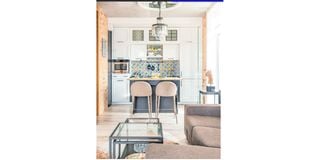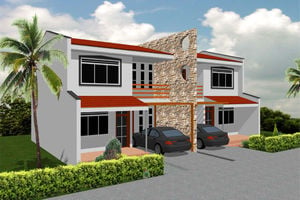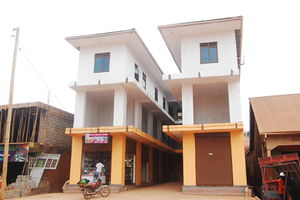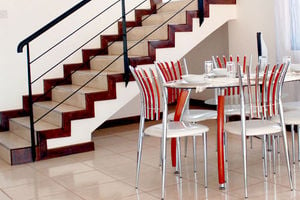
Clear pathways are equally important ensure that the layout allows easy movement and does not create a sense of being boxed in. PHOTO/UNSPLASH.COM
When it comes to designing a comfortable, functional space, whether it is for work or living, size need not be an obstacle. While larger spaces might allow for more creativity, small spaces can be just as versatile, provided they are well-planned. In fact, when working within a more compact space, thoughtful design can make all the difference in creating an environment that feels spacious, serene and comfortable. In urban centres such as Kampala, or any major city, the cost of space is often high, leading many people to settle for smaller properties.
However, the size of your work or residential space should not limit your ability to create an attractive, airy atmosphere.
According to interior designer Karyn Bagera, there are several key strategies that can help maximise the sense of space in even the smallest of areas.
Embrace multifunctional furniture
In small spaces, every square inch counts. Furniture that can serve multiple purposes is an excellent investment. Bagera recommends multifunctional pieces, such as storage ottomans or beds with built-in drawers, to maximise storage without sacrificing style.
“You can also install hanging organisers or baskets for coats, scarves, and other small items," she adds. These clever storage solutions help keep surfaces clear, contributing to a more open, less cluttered environment.
Keep it minimal
Phillip Luwemba, an interior and architectural designer, believes that simplicity is key when it comes to making a small space feel larger.
"Choose minimalist furniture that isn’t visually overwhelming," he suggests. Pieces with clean lines and simple shapes not only look more elegant but also create a sense of openness. Mirrors are another powerful tool in the designer’s arsenal.
“Strategic use of mirrors can work wonders in small spaces,” says Bagera.
“When placed opposite windows, mirrors reflect natural light, making the room feel brighter and more expansive.” This technique can visually double the space and enhance the feeling of airiness in any room.
Choose the right colours
Colour plays a crucial role in setting the tone of a room, particularly in smaller spaces. Lighter shades, such as whites, creams, and soft greys, are ideal for walls, ceilings, and floors, as they create a sense of openness and airiness. However, Bagera advises that bold accent colours can still be incorporated to add personality and warmth without overwhelming the space.
“Small pops of colour through cushions, throws, or feature walls can make a room feel inviting without making it feel cramped,” she explains.
Use vertical space
When floor space is limited, the solution is often found in the vertical dimension. Luwemba suggests incorporating shelves and bookshelves to make use of wall space for storage and display. Floating furniture, pieces that have legs or are raised off the ground also helps create a sense of openness and allows light to flow freely beneath.
Declutter regularly
One of the biggest challenges in maintaining a spacious atmosphere in small spaces is avoiding clutter.
"Clutter tends to accumulate through personal attachment to items like photos, impulse purchases, and decorative pieces," says Luwemba.
He recommends scheduling regular decluttering sessions, ideally on a yearly or quarterly basis.
"Assess how the space is being used and whether new items, such as children’s toys or exercise equipment, require designated areas," he suggests.
Decluttering is not always easy, particularly when sentimental items are involved, but Luwemba suggests carefully evaluating each piece for its practicality and value within the space.
"Ask yourself whether an item adds to the functionality of the space or if it can be stored away to free up room for something more important," he advises.
Create a sense of flow
According to Bagera, creating a sense of flow within a space is essential for achieving a spacious feel.
“An open floor plan can help create a sense of connection throughout the room, avoiding the use of unnecessary walls or partitions,” she explains. Clear pathways are equally important ensure that the layout allows easy movement and doesn’t create a sense of being boxed in.
Embrace minimalist living
In both home and office spaces, minimalist design is increasingly popular for those looking to create a sense of spa-
ciousness. Minimalism, characterised by simplicity, clean lines, and functionality, works particularly well in compact areas.
Bagera emphasises that "the fewer possessions you have, the more open and airy your home will feel."
She recommends opting for furniture with simple shapes and clean lines, avoiding overly decorative pieces that could create visual clutter.
Incorporating natural materials such as wood, stone, and linen can add warmth and texture without overpowering the space.
“These materials help ground the space and make it feel more inviting,” Bagera explains.
Adding subtle textures through woven fabrics, rugs, or unique finishes can also inject interest into the space, while keeping the overall aesthetic minimal.
LET IN THE LIGHT
Lighting plays a pivotal role in making a small space feel larger. Natural light, in particular, can transform a room, creating the illusion of greater depth.
"Maximise natural light by keeping your windows clean and unobstructed," Bagera advises.
To achieve this, opt for sheer curtains or blinds that diffuse sunlight while still allowing for privacy. For artificial lighting, Bagera suggests a combination of overhead and task lighting.
"Recessed or track lighting is ideal for a modern, sleek look. It helps keep the space feeling open and uncluttered," she explains.
A mix of lighting types not only brightens the room but also adds warmth and dimension, preventing the space from feeling too flat or boxed in.








